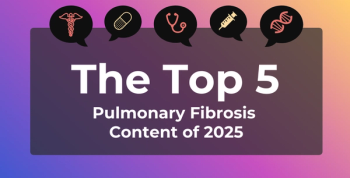
Exercise Rehabilitation Found to Help Alleviate Symptoms of Several Chronic Respiratory Diseases
Researchers discovered that exercise helps to alleviate various symptoms for patients with chronic obstructive pulmonary disease, bronchial asthma, bronchiectasis, interstitial lung disease, and lung cancer.
Training-based pulmonary exercise rehabilitation is effective in alleviating the symptoms of chronic
Researchers conducted a review examining the positive rehabilitative effects of exercise on COPD, bronchial asthma, bronchiectasis, interstitial lung disease, and lung cancer. Along with alleviating symptoms, they found that exercise improved patients’ quality of life, cardiovascular function, tolerance to physical activity, and muscle function.
“Moderate-intensity aerobic exercise, resistance training, and [high-intensity interval training] are the most common forms of pulmonary rehabilitation exercises,” the authors wrote.
For those with COPD, the authors hypothesized that exercise would improve their immune response, leading to the activation of their adaptive immune response. They said they came to this conclusion due to similar studies done on mice.
“In animal studies, aerobic exercise was found to prevent the increase in macrophage and neutrophil count in mice with COPD; a similar trend was found in population trials, with a significant reduction in eosinophil count in vivo after 6 weeks of endurance and strength training,” the authors wrote.
Additionally, a study in patients with COPD found that a 12-week exercise training regimen was associated with an increase in CD4+ T cells, better immune response, and fewer COPD exacerbations and hospitalizations.
Because of these results, the authors concluded that exercise is an effective strategy for COPD patients to reduce pulmonary and systemic inflammation, alleviate symptoms, and prevent disease progression.
Patients with asthma, who are more prone to fatigue and breathing difficulties during exercise, are often encouraged to reduce or eliminate physical activity to avoid symptom deterioration or exercise-induced bronchoconstriction; this could lead to decreased fitness and exercise tolerance, ultimately leading to exercise avoidance.
The authors instead claimed that patients with asthma are capable of physical activity and could improve their health status with it as aerobic exercise helps them manage airway inflammation.
“…Aerobic exercise has been found to effectively reduce airway eosinophilic expression, which in turn reduces the inflammation, inhaled glucocorticoid (ICS) dosage, and acute exacerbations, under the premise of standardizing and optimizing ICS medication,” the authors wrote. “Aerobic training can also positively modulate airway inflammation and remodeling mediators.”
Consequently, aerobic training and medication together can help patients with asthma.
Patients with lung cancer can also benefit from exercise. Lung cancer, the leading cause of cancer-related deaths, is broken down into 2 subtypes: non–small cell lung cancer (NSCLC) and small cell lung cancer (SCLC). Pneumonectomy is currently the most effective treatment for stages I, II, and IIIA of NSCLC, offering the best chance for long-term survival.
Exercise can benefit patients both preoperatively and postoperatively, as population-based trials have showed that resistance training improved participants’ muscle mass, strength, and sleep quality. Also, for those who previously could not undergo surgery due to poor preoperative evaluations, 4 weeks of aerobic exercise and respiratory training improved both their lung function and chances of undergoing surgery.
“Aerobic exercise improves exercise tolerance and cardiorespiratory fitness and reduces postoperative respiratory morbidity, length of hospital stay, cancer fatigue, anxiety, and depression,” the authors wrote.
Because of its positive effects, the authors considered exercise an effective adjunct to existing anticancer therapies.
Patients with bronchiectasis benefit from exercise as resistance training and aerobic exercises of the upper and lower extremities can improve their exercise capacity, endurance, lung function, and peripheral and respiratory muscle strength. It can also reduce dyspnea and raise patients’ quality of life.
The authors noted that it is challenging for patients with bronchiectasis to maintain these benefits as it becomes difficult for them to adhere to the regimen as the exercise cycles increase; as they exercise less, the positive cumulative effect decreases accordingly.
Patients with interstitial lung disease (ILD) are affected by dyspnea, exercise-induced hypoxemia, and exercise intolerance. It is difficult for patients to achieve adequate exercise intensity, the researchers wrote, but the standard COPD exercise program of aerobic exercise training appears to be effective.
The authors advised patients with ILD to start exercise training as soon as possible as exercise becomes more difficult in the late stages of symptoms. Exercise reduces patients’ lung inflammation and glucocorticoid-induced damage to the immune system.
Overall, additional high-quality randomized controlled trials are required to further evaluate the effect of exercise on patients with CRD.
“More in-depth studies are needed to investigate the pathophysiological mechanisms by which different forms of exercise improve CRD and determine alternatives to pulmonary rehabilitation in patients with exercise limitations,” the authors concluded.
Reference
Xiong T, Bai X, Wei X, Wang L, Li F, Shi H, Shi Y. Exercise rehabilitation and chronic respiratory diseases: effects, mechanisms, and therapeutic benefits. Int J Chron Obstruct Pulmon Dis. 2023;18:1251-1266. doi:10.2147/COPD.S408325
Newsletter
Stay ahead of policy, cost, and value—subscribe to AJMC for expert insights at the intersection of clinical care and health economics.







































